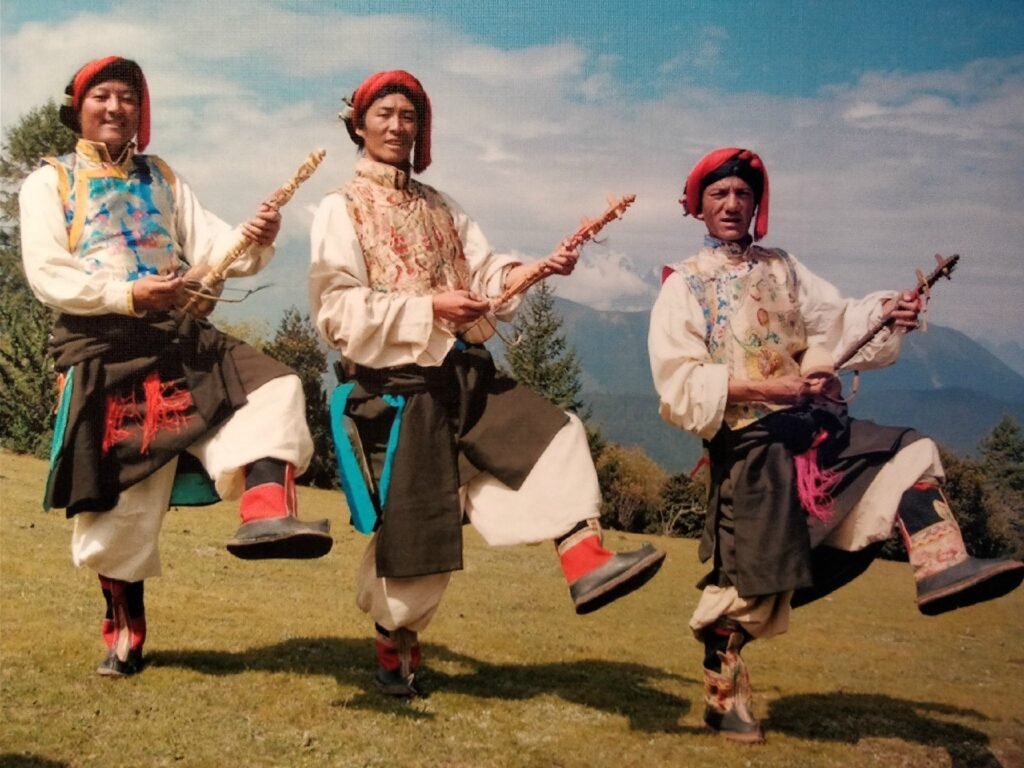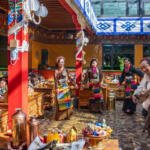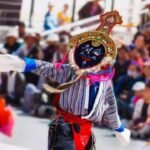The Tea Horse Road Cultural Tourism Festival celebrates the rich history and cultural heritage of Markam County. It is a crucial juncture in Eastern Tibet and a meeting point of Sichuan, Yunnan, and Tibet. The ancient Tea Horse Road, essential for trade and cultural exchange. Markham earned the reputation as a “Land of Marvelous Propriety.”
It celebrates the soul of Khampa culture and a vital carrier of Khampa cultural tourism. The Festival is an intangible cultural heritage from the heartland of Khampa. It features like a rare flower at the Tea Horse Road Cultural Tourism Arts Festival. Farmers and herders from towns such as Suoduoshi, Shudong, and Yanchen, through authentic folk songs. The melodious sounds of the three-stringed instrument, the bold and unrestrained Khampa dance, and the fresh and beautiful ethnic costumes of Eastern Tibet, fully showcase the deep historical and cultural essence and the unique charm of cultural tourism in Markam” revealing the enchanting grace of “Magical Markham.”

Each spring, as the snow melts and the green grass peeks through, a remarkable journey begins. Caravans of horses set out on an ancient path, traversing the rugged Hengduan Mountains to reach the vast Tibetan Plateau. Their cargo? Primarily tea. These caravans embark from the tea-rich regions of Ya’an in Sichuan and the southern tea mountains. It is winding through the mountains to spread into the heart of Tibet and beyond. This flow of tea and culture carved out what is known today as the Ancient Tea Horse Road. It links the tea-producing areas with their distant consumers. This route didn’t just facilitate trade; it created a unique web of interactions and influences between diverse climates, environments, and cultures.
Tea: The Gift of Choice
Upon reaching Lhasa, these merchants, undeterred by the perils of their journey, found that the best gift for the high-ranking lamas and nobility was, unsurprisingly, tea. For the common farmers and herders, tea was a daily necessity they eagerly traded their goods for, something indispensable yet unattainable locally. A Tibetan writer recalls her mother’s memory of opening the tea’s leather packaging, its long-concealed fragrance bursting forth, a scent so cherished that Tibetans would consume dozens of cups of butter tea daily.
What was commonplace at the source became a precious commodity and a staple of daily life on the Tibetan Plateau. It’s a vivid reminder that human life isn’t sustained by thought and prayer alone but also by the very tangible aspects of food and drink.

Highlights and Travel Tips
The Tea Horse Road:
An ancient trade route used for the exchange of tea and horses between the Chinese and Tibetan peoples from the Tang Dynasty to modern period. Originating from the tea-horse barter trade in ancient Yunnan and Tibet, it flourished during the Tang dynasty and reached its peak in the Qing dynasties, especially towards the end of World War II. The Tibetan region, Sichuan, and Yunnan were known for producing fine horses but not tea, while the Chinese interior needed horses for civilian and military use.
Route Complexity:
The Tea Horse Road, in reality, consists of a network of paths. While it’s referred to as a single route, it actually comprises many local trails. The primary routes are the southern Yunnan-Tibet Road and the northern Sichuan-Tibet Road, with the latter being the earliest and most heavily trafficked. The Yunnan-Tibet route begins in the Pu’er tea-producing area of Simao, passing through Lijiang, Gyaltang, Dechin, Markham, Chayab, and then to Chamdo, connecting to the rest of Tibet. The Sichuan-Tibet route starts from the tea-producing areas around Ya’an, entering Dartsedo, and then splits into two lines: one heading north to Chamdo via Daocheng (འདབ་པ་རྫོང་།) and Derge, and the other south to Chamdo via Batang and Zogang.
Additional Branches:
Besides the main routes, the Tea Horse Road includes several branches, such as the one from Ya’an to Songpan and even to Gannan; a branch from the northern Sichuan-Tibet Road through the former Dengke County to Qinghai’s Yushu, Xining, and towards Taozhou; and a route from Chamdo northwards through Luhuo to Qinghai and other areas.
Challenging Terrain:
This ancient path is among the most difficult to navigate in the world, traversing the complex and unique high mountain and gorge landscapes of the Hengduan Mountains, renowned for their rugged terrain and perilous conditions.

















